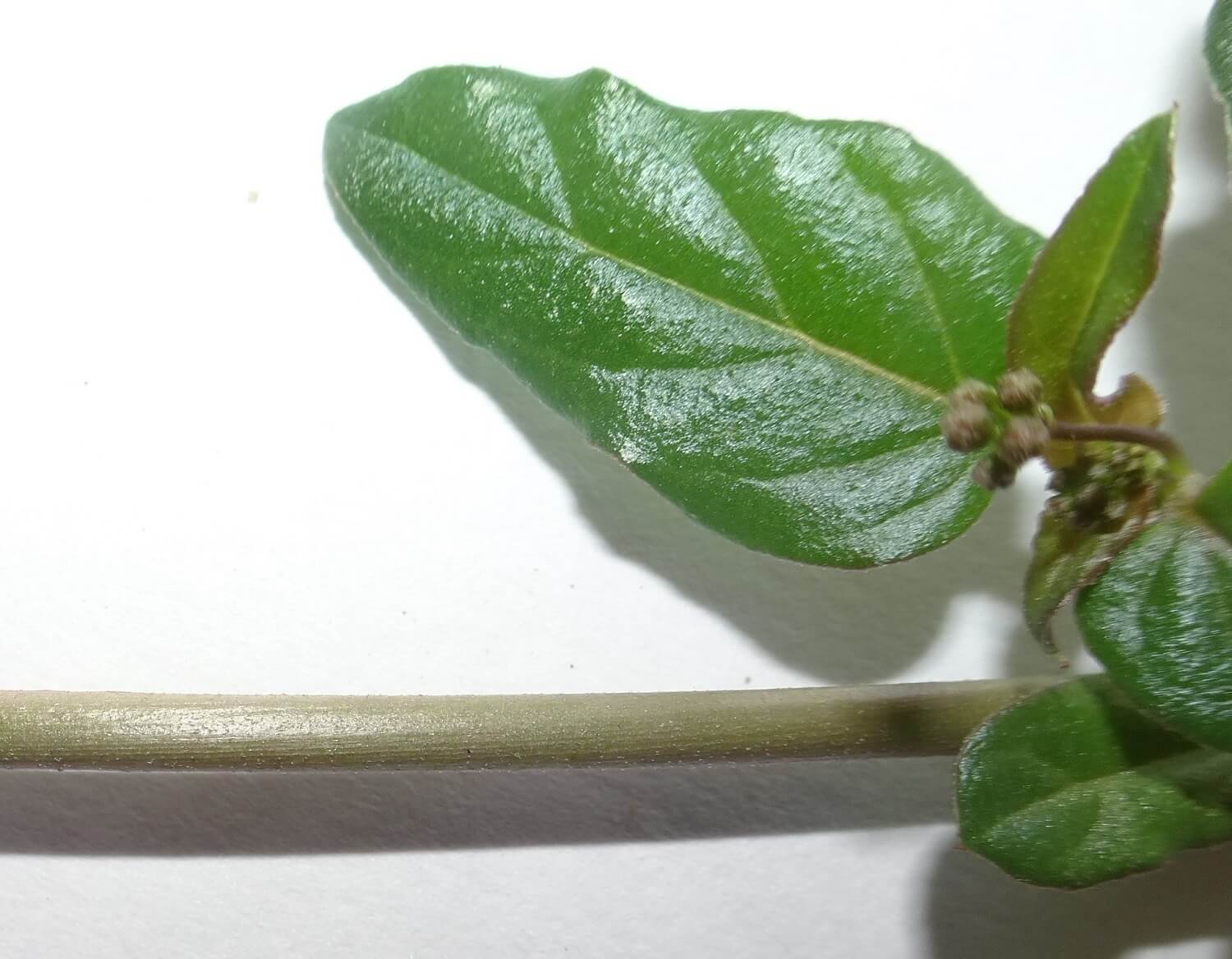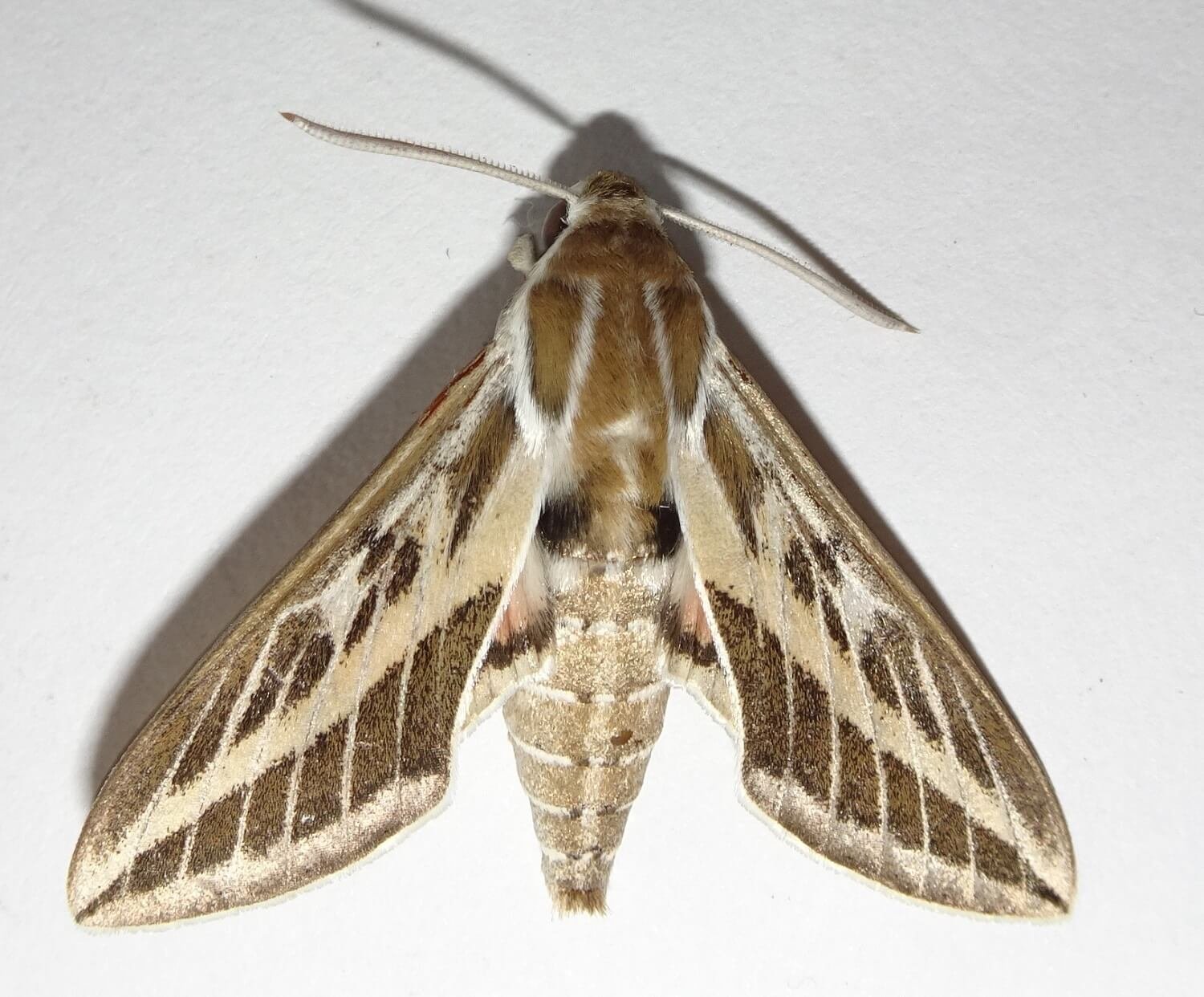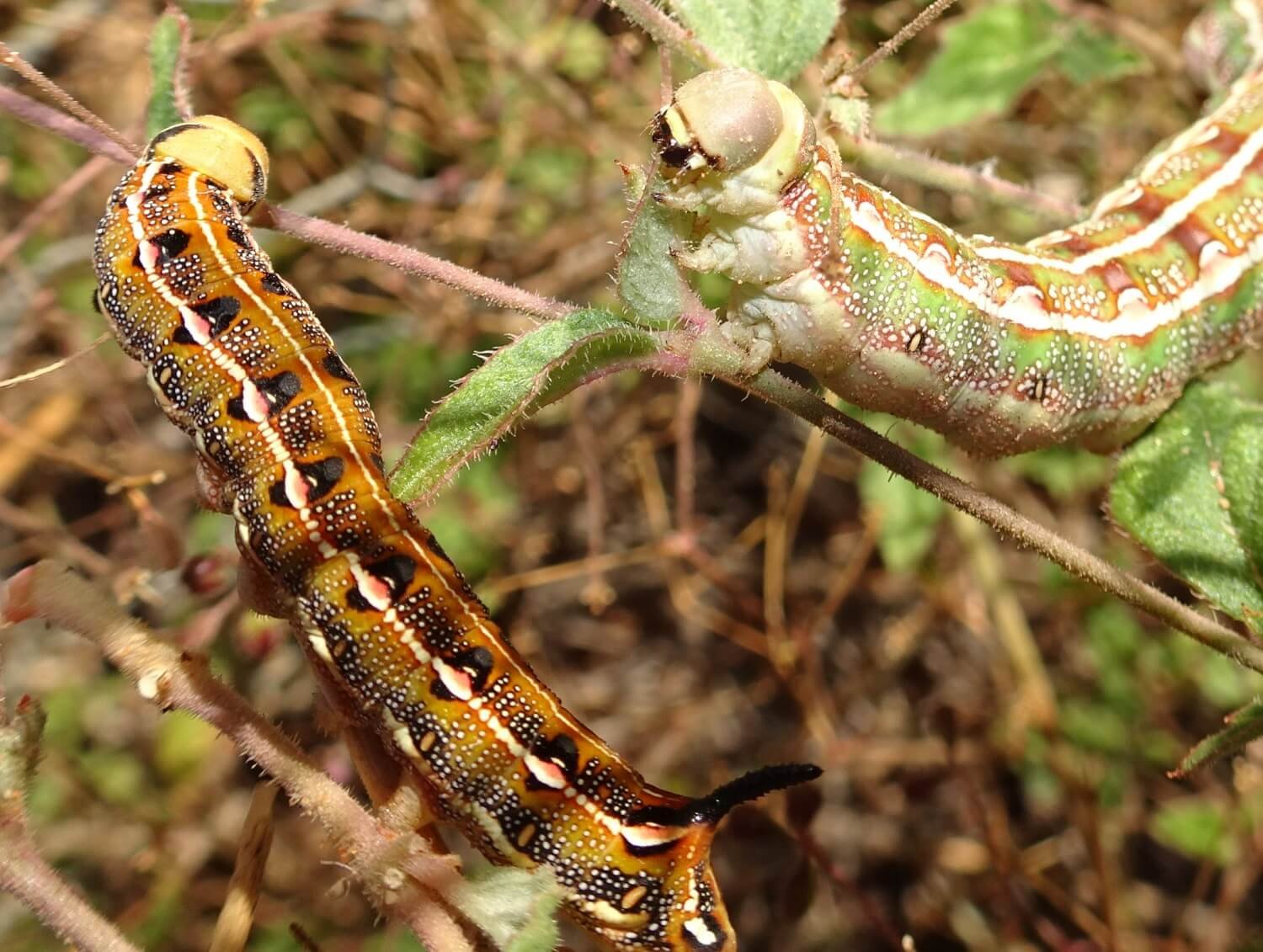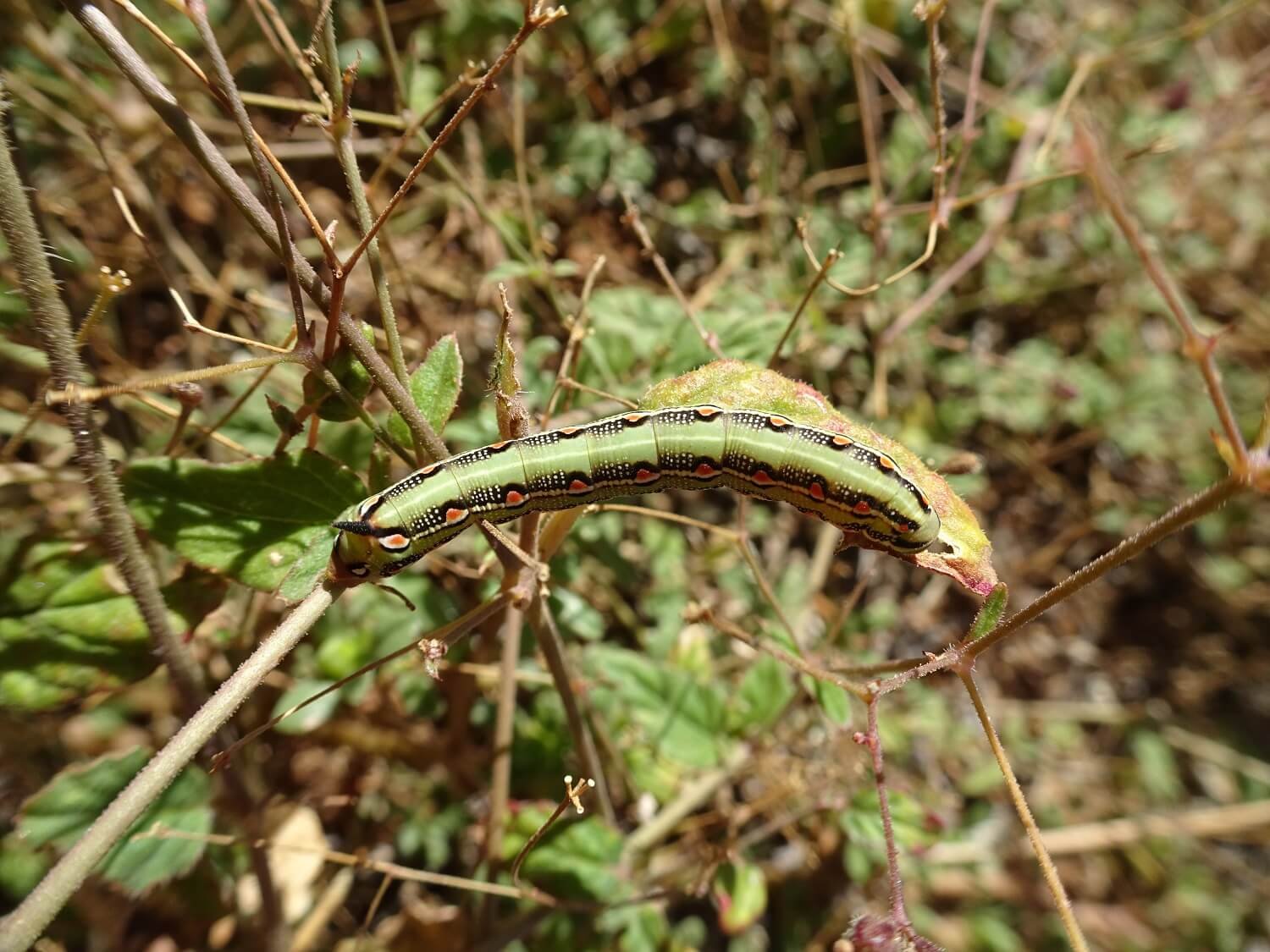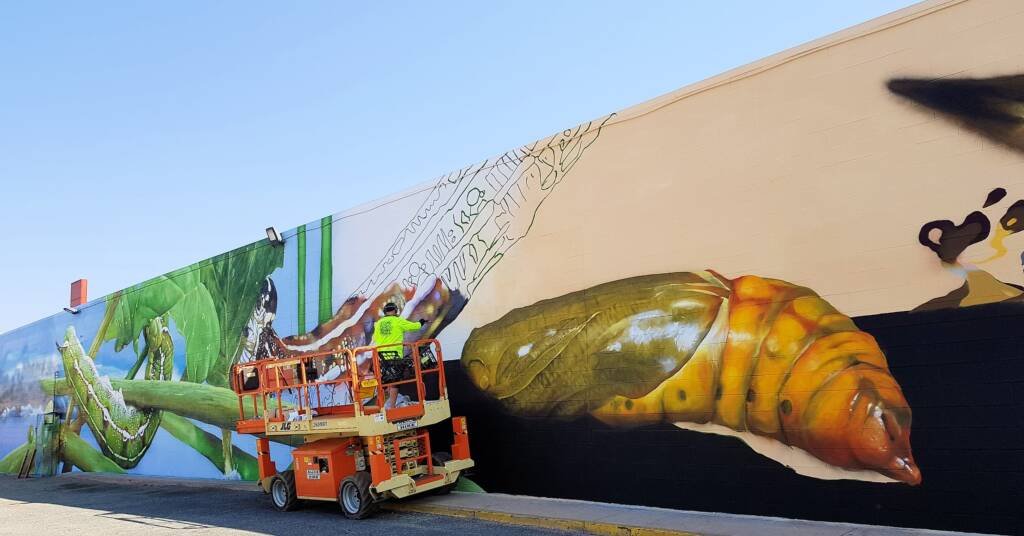Tah Vine and Hawk Moths
This is Boerhavia, or Tah Vine.
Here finally, are the two Victorian Tah Vine species side-by-side: the common Boerhavia dominii and the FFG-listed, critically endangered B. coccinea. It is much more obvious when you have them in hand, but the stems of B. coccinea (Scarlet Spiderling) are densely hairy. Although the Scarlet Spiderling is threatened in Victoria, it seems pretty common in other states and is even considered weedy here and overseas.
It is a summer-growing, sticky groundcover that is especially abundant after good summer rains, like this year. The roots are eaten as bush tucker, and it is said that aboriginal children used the sticky vine to entrap small birds that came to drink at waterholes (1).
Scarlet Spiderling is also the food plant for the Striped Hawk Moth caterpillar (Hyles livornicoides). This year I have noticed a few moths and lots of caterpillars. The greens, orange and ochre markings on the caterpillars are stunning. I delved a little deeper:
The caterpillars are sacred totems of the Arrernte people of Central Australia. They are called Ayepe-arenye (Ayepe = Tah Vine, arenye = belong to), anglicised as Yeperenye. The caterpillars are ancestral beings important in creation stories and sacred sites and inspire dot paintings (2). Their standing is acknowledged in festivals and street art in Alice Springs (3).
But it seems the caterpillars are declining. In Central Australia, the evil weed, Buffel Grass, is outcompeting the Tah Vine and the caterpillars are no longer plentiful. Although the Yeperenye caterpillars were once an important food source, Arrernte protocols no longer allow the caterpillars to be eaten due to their sacredness, scarcity and availability of easier foods (4).
Buffel Grass is my least favorite plant ever. It has not yet established in the Victorian Mallee but every summer it tries to get a foot-hold (see a previous blog post: Busting Buffel Grass). Thankfully, in areas where Buffel is controlled, the caterpillars and Tah Vine are still abundant after good summer rain (6).
Click on these images to see them full size - Life Cycle of the Yeperenye Caterpillar – artist Jimmy DVATE / assisting artist Mark Twohig, Jesse Bell / steel sculpture artist Janine Stanton / Scientist Fiona Walsh. Images from Ausemade
Next time, I’ll just use Jazz to spread the sticky seed!
Reading about the decline of such an important totemic species made me want to grow more Tah Vine to feed our population of Hawk Moth caterpillars. Perhaps a reintroduction will be necessary one day? But of course, when you're messing about with nature, every action has consequences…
I was out collecting seed from our Tah Vine plants so I could disperse it to uncolonised areas. As I stripped the sticky seeds from the trailing stems I heard some very contented clucking. When I looked behind me, our chooks were following me and EATING the caterpillars I was trying to save!… My seed collecting quickly turned into a caterpillar salvage operation. I relocated them to a patch of Tah Vine beyond the foraging range of our chooks!
More information:
Latz, P. (1995) Bushfires & Bushtucker – Aboriginal Plant Use in Central Australia.
ABC news story (2015) Sacred caterpillars plentiful after the rain
Ausemade (2018) Yeperenye caterpillar and moth (Stunning street art in Alice Springs) and a timelapse video of the creation of this art is here
Walsh, F. (2017) Caterpillars as big as a mountain are starving (A passionate reflection on decline of this totem species and what it means for the Arrernte people)
Mallee Conservation (2020) Busting Buffel Grass
Carter, C. (2020) “A touch of light: totemic caterpillars”



